How to make an NFT. It’s a thought that occurs to more and more people every day. NFTs have been making the news at an ever-increasing pace. But people talking about NFTs eventually want to dip their toes into this exciting new trend. And you’ll soon find out exactly how to create an NFT and leverage it to your advantage.
Quick Menu:
- What Is a Non-fungible Token (NFT)?
- Who Can Create an NFT?
- 4 Different Types of NFTs You Could Create
- What Are “Gas Fees”?
- 6 Steps to Create Your NFT
- The Larger Metaverse Blockchain
- Metaverse Avatars as NFTs
- NFTs and their Connection to Twitter
What Is a Non-fungible Token (NFT)?
Learning to make an NFT (Non-Fungible Token) needs to begin with the basics. People usually think of NFTs as digital artwork. And there is some truth to the concept. But there’s much more to an NFT than a simple image file. NFTs can be domain names, game assets, tickets to enter online venues or clubs, and various other things. NFTs also intersect with many areas of the metaverse. This includes metaverse avatars and even online digital pets.
NFTs are essentially defined by the fact that they’re unique non-fungible entities. This means that they’re digital items inherently unique and tied to the blockchain. NFT’s major innovation stems from enabling digital assets to be unique and owned by one person. You can learn more about the various types of NFTs in the article “NFT Guide; Everything You Need To Know About NFTs”.
Who Can Create an NFT?
People often assume that NFTs need to be minted similarly to currency. That there’s a central authority controlling the process. But in reality, anyone who’s willing to pay a modest up-front cost can mint NFTs. Many popular NFT marketplaces also provide users with tools to create NFTs.
Artists often turn digital music, computer graphics, and similar works into NFTs. But when learning how to create NFTs, people are often excited to find they even extend to physical items, such as photographs, drawings, and other items that can also be tied to the blockchain.
4 Different Types of NFTs You Could Create
Learning to make an NFT also means learning about the different choices. You have a wide variety of options when considering how to create an NFT. Some of them are perfect for collections. Other types of NFTs might be an ideal fit for Web 3.0 projects or new projects by innovative metaverse companies. The options are endless. But the following types of NFT are the most popular options.
1. Art
Art is the most popular choice when people learn how to make an NFT. It’s not just great for collectors. Artists can generate sizable income when selling limited-edition works through NFT markets. NFT art often comes with public certificates of authenticity and ownership stored on the blockchain.
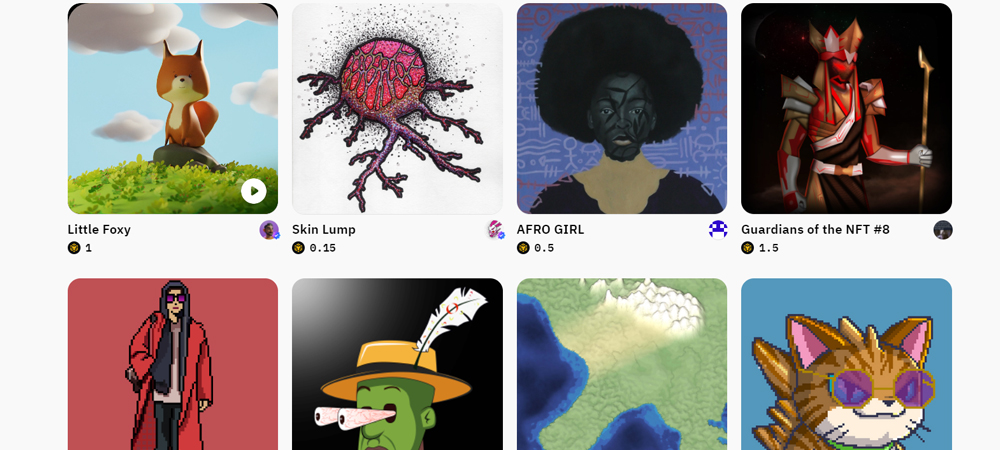
Image attribution: AirNFTS
2. Digital Collectibles
Digital collectibles are a popular choice when looking into how to make an NFT. Building collections is fun because of scarcity. Items like tickets to Woodstock, sports cards, or misprinted stamps are valuable because they’re rare. And NFTs allow you to turn your digital creations into one-of-a-kind collectibles.
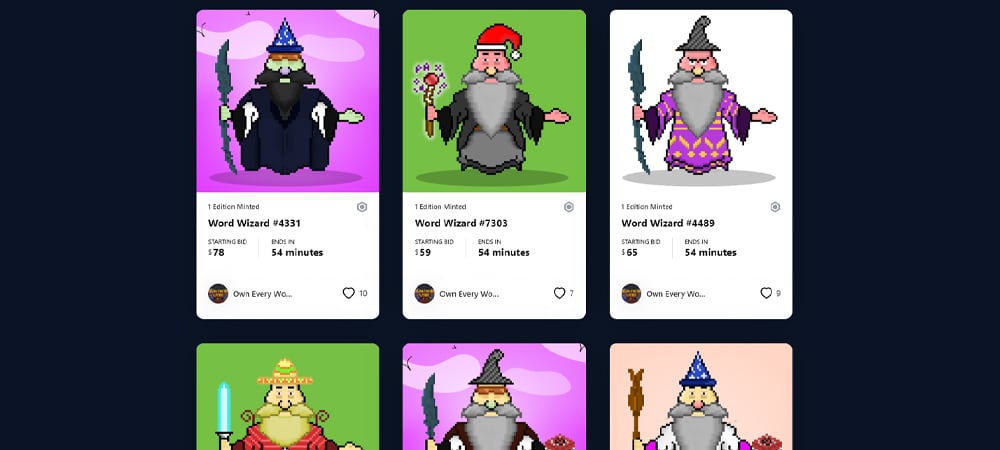
Image attribution: Crypto.com Marketplace
3. Music
Many musicians are learning how to make an NFT to monetize their work better. Some artists are tokenizing specific versions of their music tracks, while others are making unique bundles of real-world merchandise alongside NFT-based virtual or metaverse goods. This results in an emphasis on direct artist-to-fan interaction.
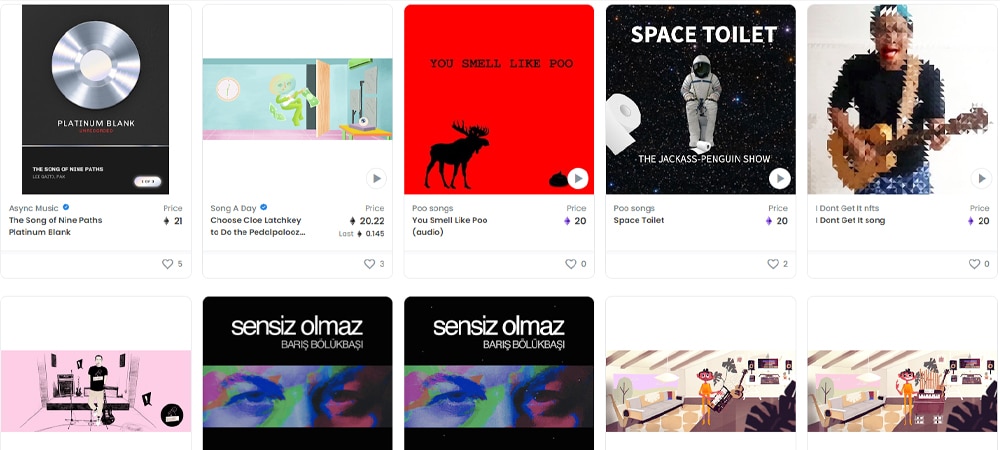
Image attribution: OpenSea Music
4. In-Game Items
In-game NFT items are still a relatively new trend. But more and more people are looking into how to make an NFT for their games. NFTs are now usable in some games as avatars, clothing, creatures, furniture, and even land. NFT-based items are becoming especially common in the metaverse.
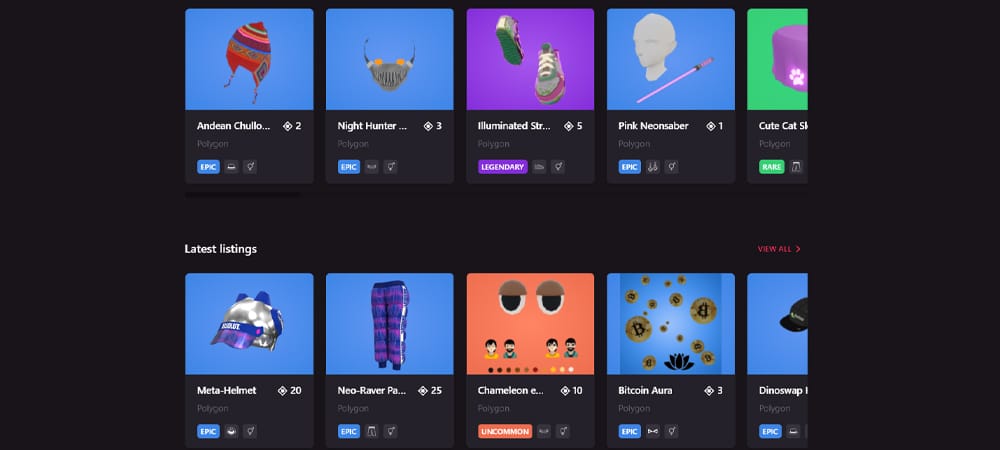
Image attribution: Decentraland Marketplace
What Are “Gas Fees”?
The topic of gas fees comes up reasonably often when learning how to make an NFT. This comes back to the fact that NFTs work through a blockchain digital ledger. Every transaction on the blockchain has a fee paid for by digital miners. The fees are called “gas”, hence “gas fees”.
You need to put gas in your car for it to move. And you need to pay the gas fee to make the blockchain process any given transaction. Anything done on the blockchain, including working with NFTs, has an associated gas fee. Even transferring ownership of an NFT will incur a small gas fee. It’s important to note that gas fees are often reasonably insignificant in terms of the overall cost. You can almost think of it as sales tax. It’s usually a tiny percentile of a transaction’s overall cost.
Video: What Are Gas Fees?
6 Steps to Create Your NFT
At this point, it’s clear that there are many different ways to make and leverage NFTs. And you’re probably curious about the practical steps involved with learning how to make an NFT for yourself. You might be surprised by just how easy the process is. Even if you’re starting from scratch, the following six steps will take you from the very beginning to a fully minted NFT.
1. Setup Your Crypto Wallet
The first step in learning how to make an NFT is to set up your crypto wallet. As the name suggests, crypto wallets are applications used to store crypto-based assets like cryptocurrency or NFTs. When setting up a crypto wallet, the most important consideration is compatibility with your chosen blockchain option. Likewise, you’ll want to ensure the wallet interface can run on your preferred computing environment.
MetaMask is one of the most popular options as it has support for Ethereum-based markets such as OpenSea. On top of that, it can run on smartphones or through a Chrome or Firefox extension. Coinbase’s wallet is another popular choice since it can run as an app, browser extension, or through a web interface. It also has comprehensive blockchain support, including non-Ethereum options. This is useful if you’re also interested in cryptocurrencies like Bitcoin. Both wallets are solid choices with a strong community.
2. Decide On What Your NFT Will Be
The next step to learning how to make an NFT involves thinking about your intended result. Just what kind of NFT do you want to make? Almost anything can be minted as an NFT. But digital multimedia files are generally the most accessible items to turn into an NFT. Images and artwork are usually used in png or gif format, while the text is usually formatted into a pdf to preserve a unique presentation along with any formatting. Music files are typically encoded as MP3s, while videos are generally in mp4 format.
Keep in mind that you can also make digital recordings of analog media. It’s generally best to go with the previously mentioned file formats for these conversions. Both file formats and the type of media are essential for marketing reasons. Having a set theme can help you make a name for yourself with fans of particular mediums.
3. Choose An NFT Marketplace
The choice of theme and type of NFT also impacts which market you’ll want to sell them on. The various NFT marketplaces are similar in many respects to offline marketplaces. Different NFT markets offer unique methods of operation and specialties.
Think about how various stores in your area have better selections of different items. NFT marketplaces are the same. In addition to this, when you’re learning how to make an NFT, you can also consider how well your products will fit into NFT marketplaces that you find personally engaging. It’s often a good idea to look at the various NFTs for sale in the most popular markets to get an idea of what you might enjoy making and selling on them. You can find an in-depth look at the top NFT markets in the article “NFT Marketplaces; The Top 10 Markets for Your NFT Needs”.
Video: Meet OpenSea
4. Mint Your NFT
The next step in learning how to make an NFT is where you’ll see concrete results. This is the point where you “mint” an NFT. Minting is the process by which you upload an NFT to the blockchain. This is generally tied to the market which you’ve chosen to use. When people learn how to create an NFT, they typically rely on a single market’s tools to mint their NFTs.
Rarible and OpenSea are among the most popular options for markets that allow for NFT sales and on-site minting. Both services guide you through the process of uploading content into a crypto-wallet as an NFT. This also gives you the chance to add additional information, like a general description of the newly minted NFT. You can also consider marketing strategies when minting your creations. People can add levels, leave parts of the NFT locked until it’s purchased, etc.
5. Share & Market Your NFT
Now that you’ve created your NFT, it’s time to market it. When you’re learning how to make an NFT, you see the communities adjacent to it. The markets, social media sites, and forums involved with aspects of digital media and NFTs can build interest in your goods. Public relation is a vital part of digital marketing. As you become visible, so does awareness of your brand. Online advertising, appearances on podcasts, and posting on social media can help you build up your reputation. Social media even allows for direct NFT links. And online discussions can build up interest.
6. Invest Time in Building Your Community
Once you’ve built up a PR foundation, it’s time to hone it in. When you started learning how to make an NFT, you undoubtedly had some end goals in mind. This is usually tied to specific interests and the communities surrounding them. Maliha Abidi, who earned 2,000 ETH in 50 days with NFTs, offered firm advice regarding community involvement. Abidi stated that the art market trends were less important than the community surrounding his work. A motivated community tagging posts or tweets and actively spreading the word are invaluable marketing forces.
Learning how to create an NFT goes hand in hand with learning to create a community around them. It would help if you also kept an adage in mind. People need to spend money to make money. A budget for sophisticated marketing campaigns can go a long way toward building up your brand’s momentum.
The Larger Metaverse Blockchain
NFTs come in a wide variety of different forms and can be used in a number of fascinating ways. When you learn how to make an NFT you’ll undoubtedly encounter discussions about the metaverse. And the intersection of the metaverse and blockchain holds infinite potential for NFT development. Any metaverse implementation which uses unique assets will almost certainly use the blockchain and NFTs.
This goes far beyond clothing or accessories. You can even create digital animals within the metaverse, encapsulated as NFTs. You can browse the most innovative implementations in the article “The Most Interesting Metaverse Blockchain Projects”.
Metaverse Avatars as NFTs
NFTs impact most areas of the metaverse, but it’s vital for a user’s personal identity. Users embody themselves in the metaverse with an avatar, which can be an NFT. When you learn how to make an NFT, you’re also picking up the skills needed to ensure the avatars you make are wholly unique. NFTs also extend into an avatar’s clothing, accessories, and sometimes even capabilities.
NFTs are often the first step into the metaverse. You can learn all about metaverse avatars and their relationship with NFTs in the article “Metaverse Avatar Guide; Embody Yourself in the Metaverse”.
NFTs and their Connection to Twitter
One of the common reasons people decide to learn how to make NFT stems from increased public support. Many popular services build links to the blockchain and enable internal NFT support. Perhaps the most significant recent example comes from Twitter. The social media platform’s NFT support is still in the testing phase. But it’s progressing rapidly and is already relatively stable.
This highlights the fact that NFTs are becoming an Internet standard. You can learn more about twitter’s NFT support and how other services are catching up in the article “Twitter NFT; First Social Media Platform to Support NFT Technology”.
Keep in mind that NFTs appear in almost every area of modern technology. Now that you know how to make an NFT, you can leverage this skill in various ways. It’s fun, profitable, and exciting.
Did You Like This Article About How to Make an NFT?
You might also be interested in the following articles:
- NFT Art Guide: Meaning, Examples, Market Places, and How to Buy
- NFT Marketplaces; The Top 10 Markets for Your NFT Needs
- The Most Interesting Metaverse Blockchain Projects
- NFT Crypto Projects: Top 10 Most Famous NFT Collection of All-Time
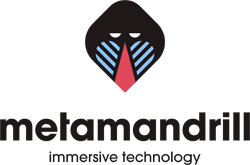
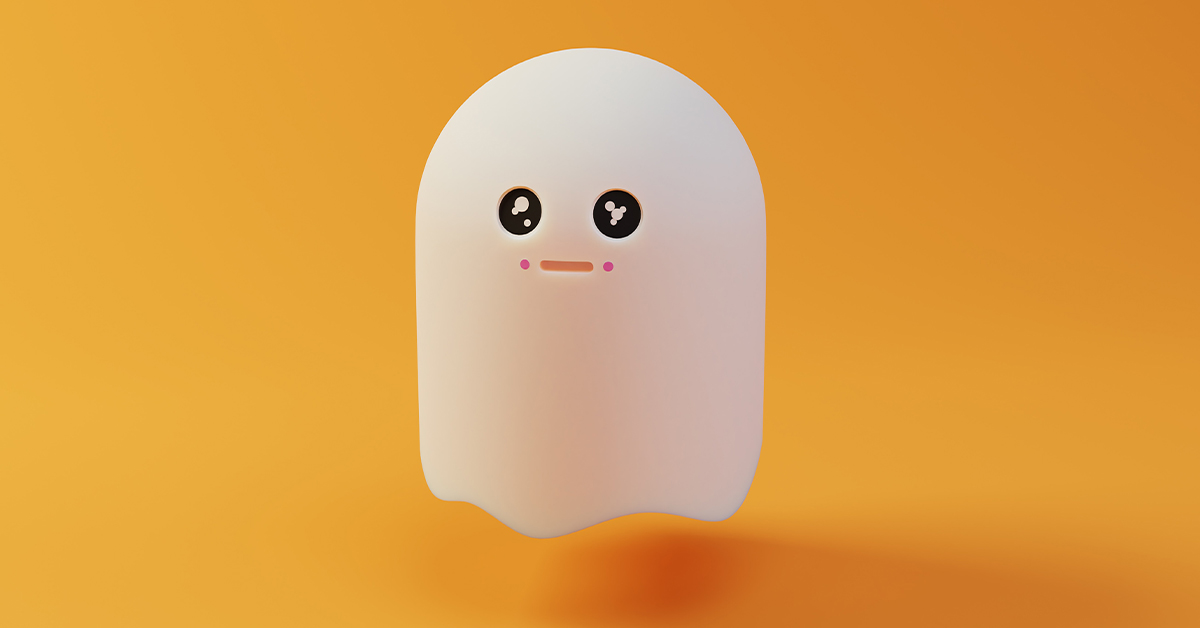


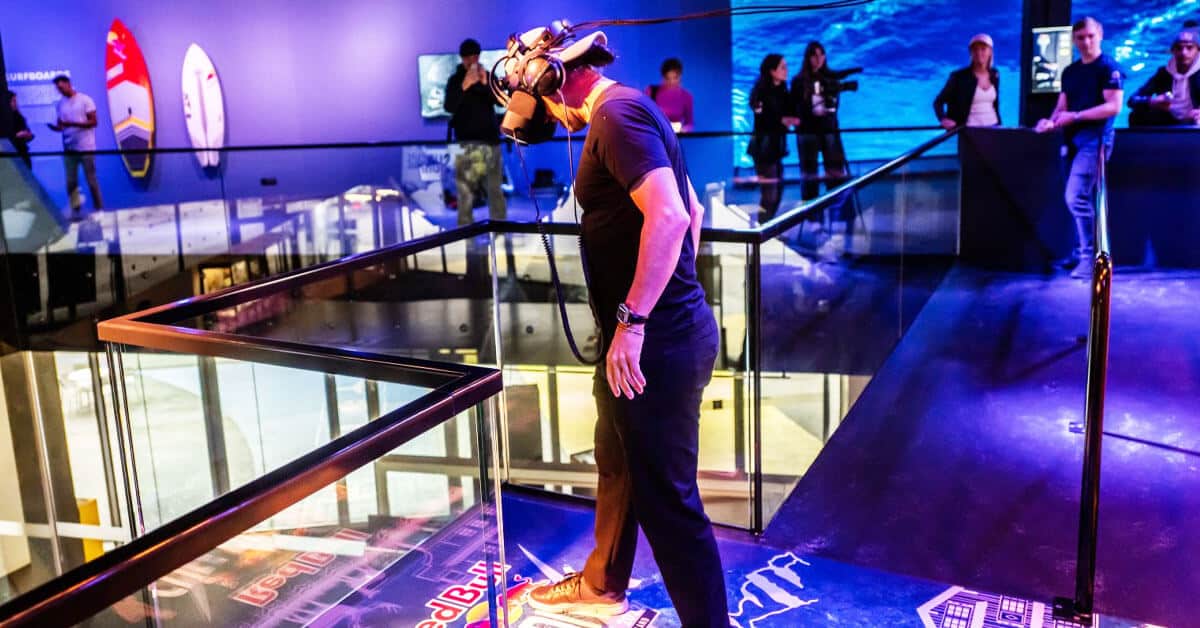
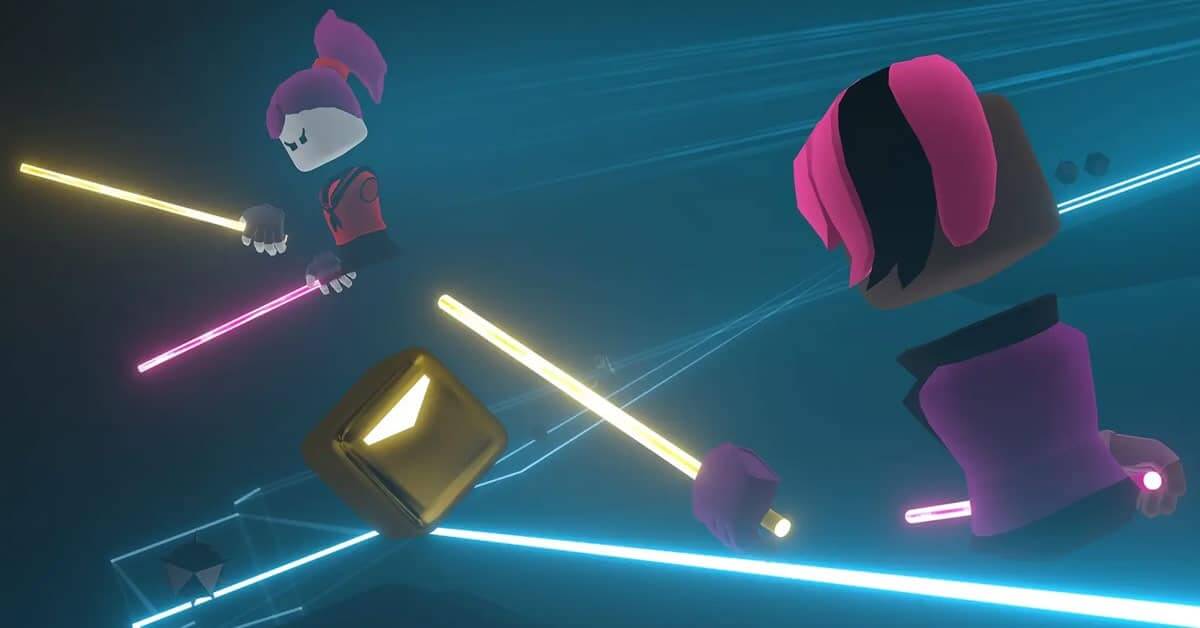



Leave A Comment